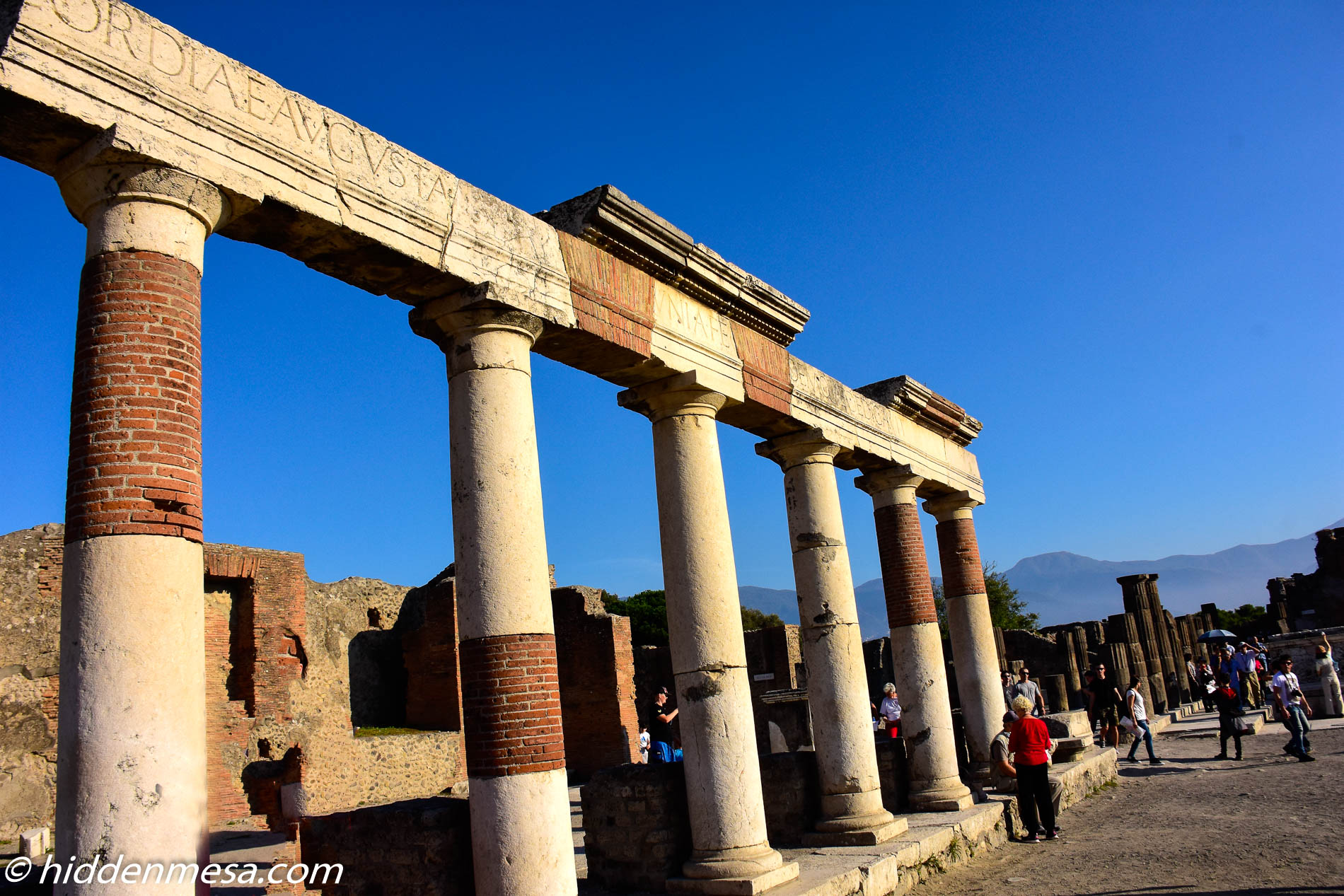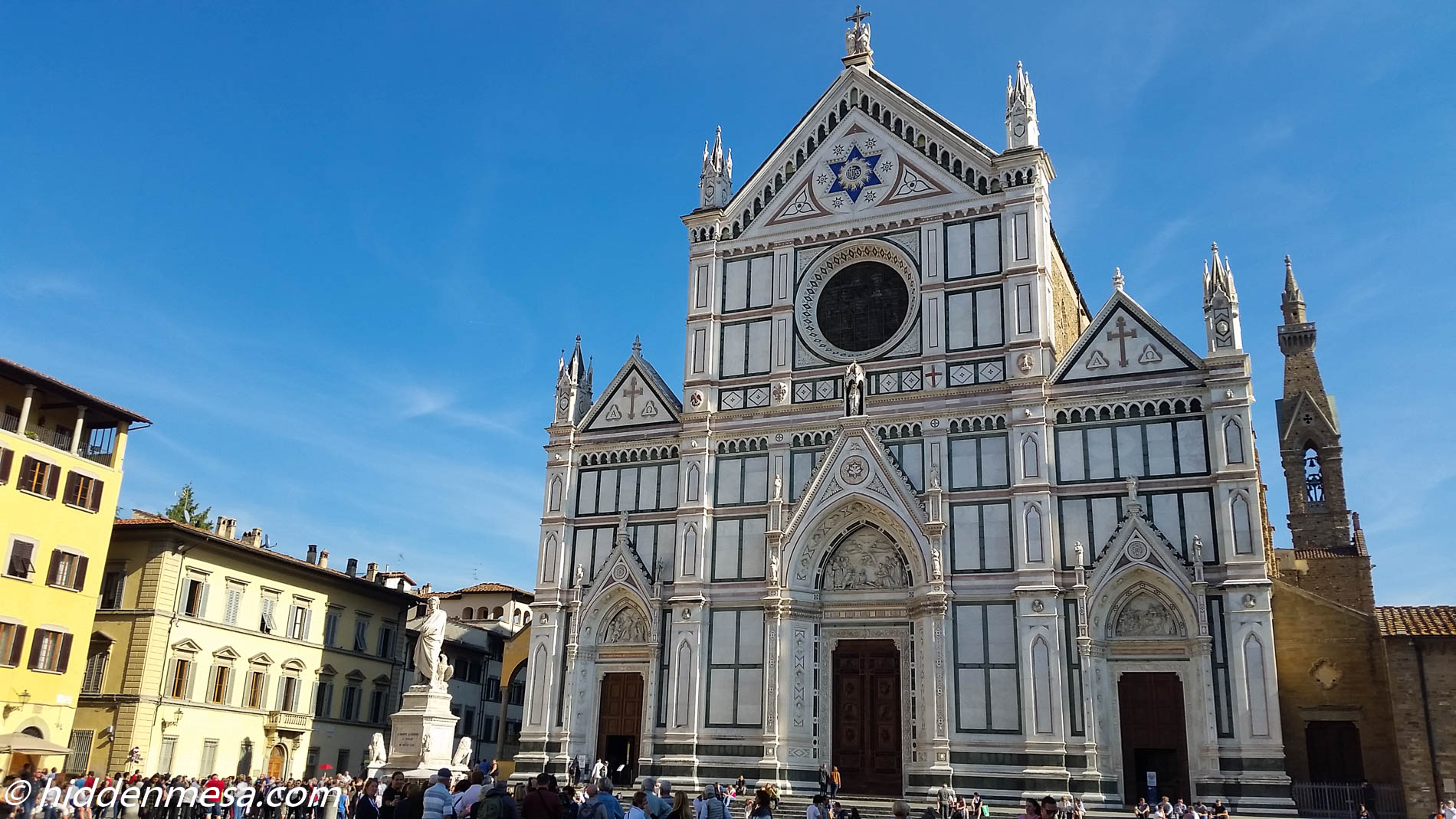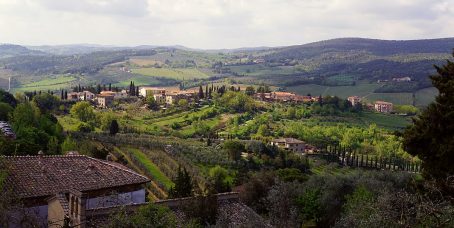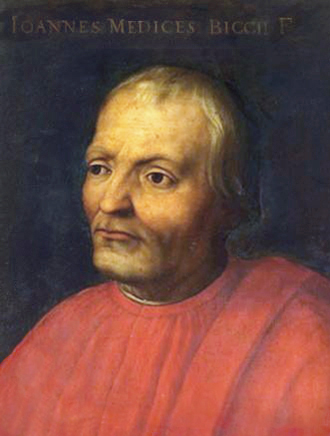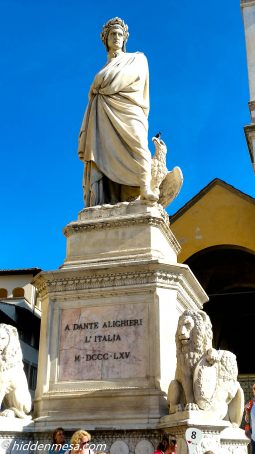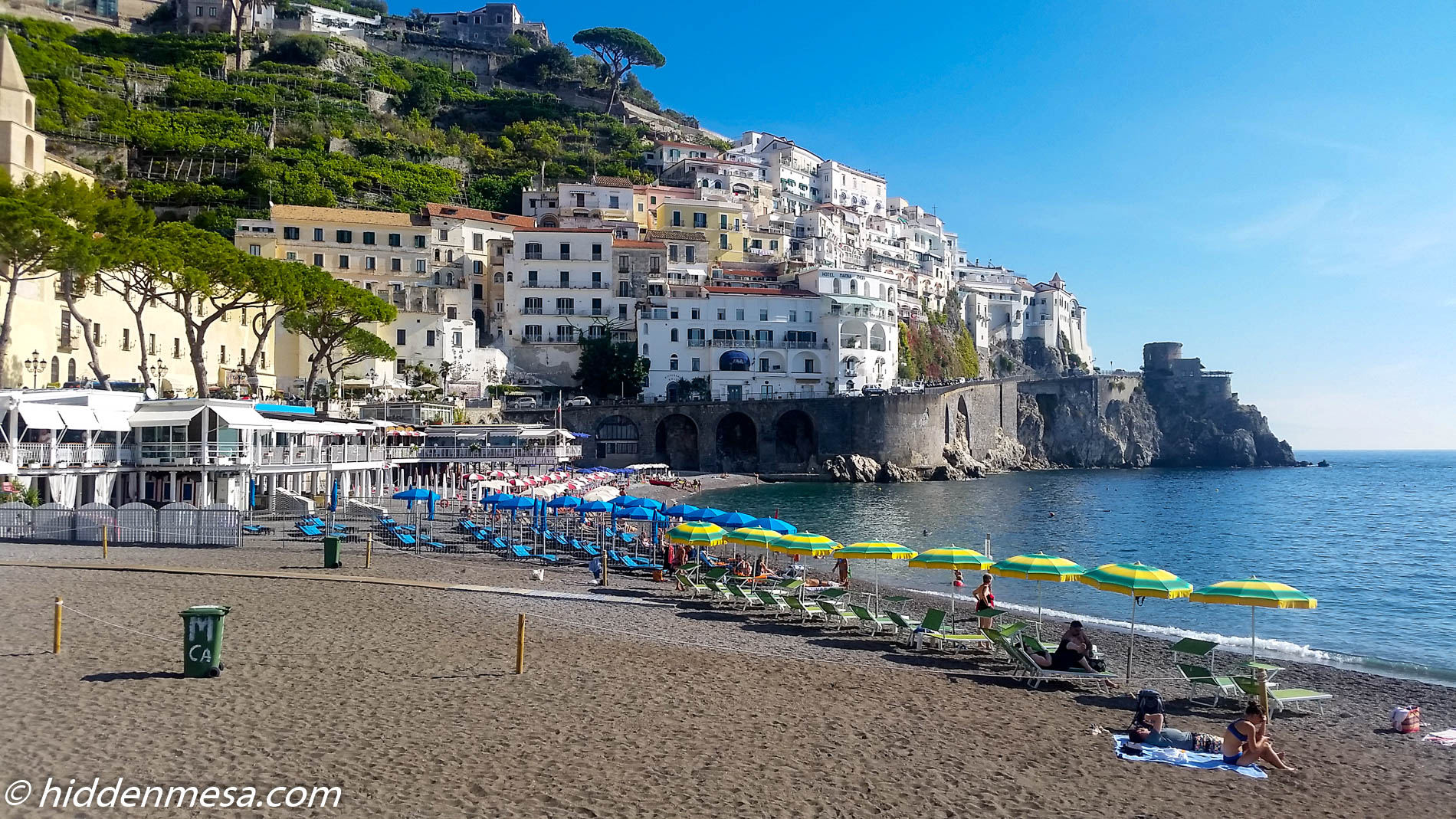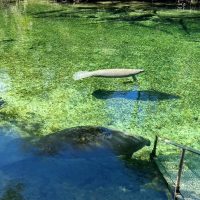Why is Pompeii so fascinating? We know that it was an ancient Roman city that was destroyed in a volcanic eruption when Mount Vesuvius erupted in 79 AD. We also know that it was a city frozen in time at the instant of the eruption because the volcanic ash covered everything as the blistering hot gas cloud killed everything alive, then burned all that stood above the ash. And that, in a nutshell, is why we find it so fascinating. Not considering the agonizing death and destruction that rained down on this relatively large and sophisticated city, it’s our chance to observe something as it was, without the effect of time interfering with our interpretations of how things were. We’re reminded of our first visit to the famous ghost town of Bodie in the Eastern Sierras of California, where you walk through this gold rush era mining town that looks as if the residents simply walked away and left the city as it was.
You may see reference to Pompeii as “Pompei” because that’s the proper spelling of the new, more modern city of Pompei. The original city that was destroyed in 79 AD was spelled Pompeii. It’s also spelled Pompeji, depending on the language you’re viewing your Google Maps in.
The Volcano
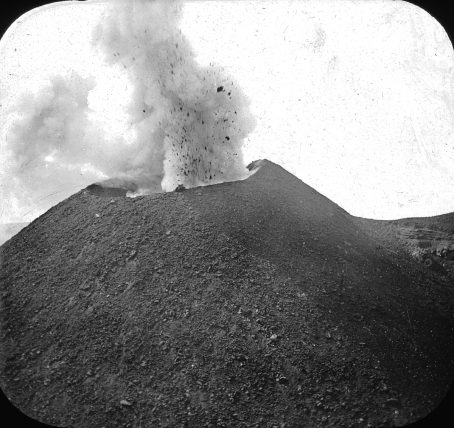
Mount Vesuvius erupting. By William Henry Goodyear – Brooklyn Museum, Public Domain, Link
Mount Vesuvius has erupted many times in the past and continues to be a dangerous volcano. Our tour guide told us that there are at least 1,200,000 people living in what the Italian government calls “The Red Zone”, which is the area that needs to be evacuated in the event of an imminent eruption. And what’s the likelihood it will erupt again? Here’s a quote from one Wikipedia article that talks about past eruptions:
“Mount Vesuvius has erupted many times. The famous eruption in AD 79 was preceded by numerous others in prehistory, including at least three significantly larger ones, the best known being the Avellino eruption around 1800 BC which engulfed several Bronze Age settlements. Since AD 79, the volcano has also erupted repeatedly, in 172, 203, 222, possibly in 303, 379, 472, 512, 536, 685, 787, around 860, around 900, 968, 991, 999, 1006, 1037, 1049, around 1073, 1139, 1150, and there may have been eruptions in 1270, 1347, and 1500. The volcano erupted again in 1631, six times in the 18th century (especially in 1779 and 1794), eight times in the 19th century (notably in 1872), and in 1906, 1929 and 1944. There have been no eruptions since 1944, and none of the eruptions after AD 79 were as large or destructive as the Pompeian one.”
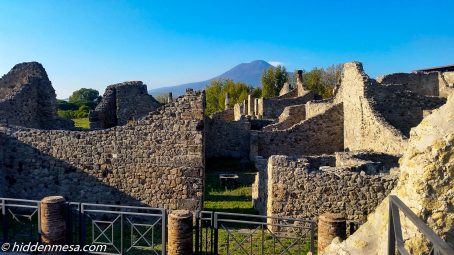
These structures are thought to be homes like our condos, with Mount Vesuvius in the background. Photo by Bonnie Fink.
It’s thought—based on core samples of sediment and carbon dating—that Pompeii was originally founded between 800 and 600 BC. In its present location, it was originally much closer to the ocean, but we’re not sure if the distance it now sits away from the ocean is a result of lower ocean levels, sediment from nearby rivers filling in the Bay of Naples, or volcanic ash covering the shallower depths of the bay. The original Pompeii, while it was on the shore of the Bay of Naples, is only five miles from Mount Vesuvius.
The population of Pompeii was between 11,000 and 20,000 people, depending on which account you read. The first number is based on the number of households in the city and the second number seems to account for the transient population as well. Pompeii was a major commercial center and probably had a great many non-permanent residents within its walls at any particular time. There were hotels, restaurants, baths, marketplaces and exchanges, and even brothels that all catered to the large transient populations.
At the time of the eruption, approximately 2,000 people died, which suggests that much of the population heeded the initial warnings from Mount Vesuvius and fled the city. The eruption took about 24 hours to run its full course, and evidently started with earthquakes and a large ash cloud exploding about 20 miles into the sky, giving people an indication of what was to come. In the interest of accuracy though, we should point out that the 2,000 number is an estimate of the people who died within the city itself. Our reading also tells us there is a substantial number of bodies located along the area that was once the shoreline of the Bay of Naples, and most of them have not been excavated. This suggests that an unknown number of people were trying to flee but were caught up in the eruption and unable to escape by land. They met their fate waiting, hoping for rescue from the sea.
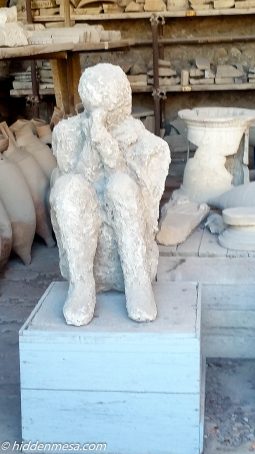
A plaster cast of one of the many bodies found in Pompeii. The plaster casting was made by locating a cavity in the underlying volcanic ash, indicating a place where a person had perished. The cavity was then pumped full of plaster, revealing the shape of the person as they were when they were overcome during the eruption. Photo by Bonnie Fink.
Archeologists were able to make several plaster castings of the people who died in the eruption by locating the cavities in the ash where people had died, and injecting those cavities with plaster, creating the shape of the people as they were at the moment they died. It gives a very clear picture into the life in Pompeii during the time. It also shows the agony that these people—and their animals—must have suffered in the last moments of life during the eruption.
As we walked through the restored areas of Pompeii, our first impressions were of a place that, given the level of sophistication and civilization, we could have managed a life here in 79 AD. The streets were paved, there were pipes that carried water to various places throughout the city, and while the sewer basically ran down the street, there were sidewalks and stepping stones to get across. Yes, civilized as Pompeii was, the Romans hadn’t quite worked out a sewer system yet. Chamber pots were basically thrown out in the street, and everything ran downhill. And of course, those pipes that carried drinking water throughout the city were made of lead.
With all the death and destruction in Pompeii, and with the virtual certainty that it will erupt again, the question is, are we going back? The answer is, absolutely. With a town as well preserved as this one, it’s a window into how the Romans lived, worked, and played. Many of the paintings on the walls are as they were in 79 AD, the building ruins for the most part are easily worked out in terms of their purpose, and much of life around the city was well documented, either through careful examination of these ruins, or other documentation from the time. With the certainty of eruption, it’s still hard to pass up a chance to see this place. After all, what are the chances? Right?

